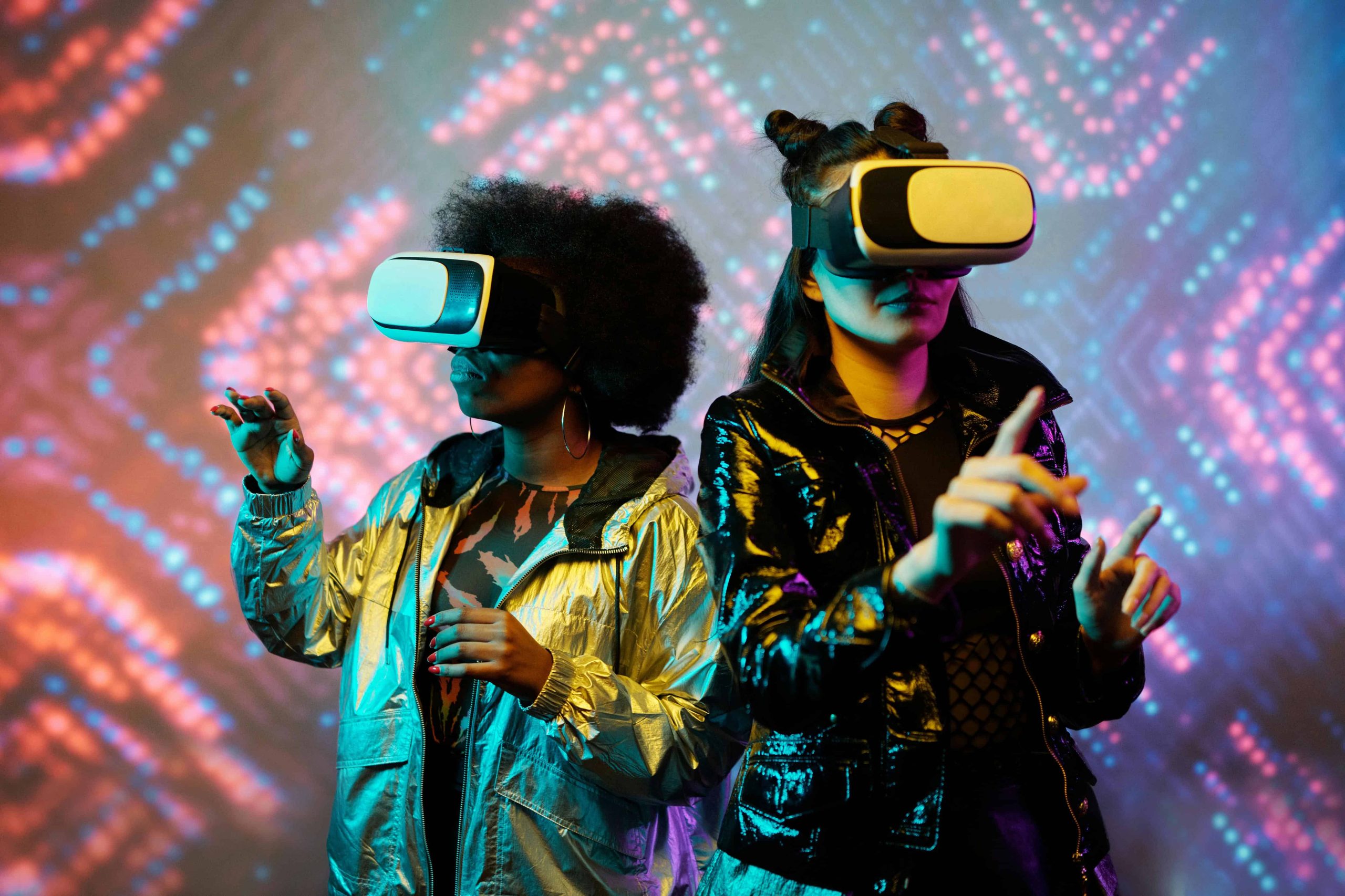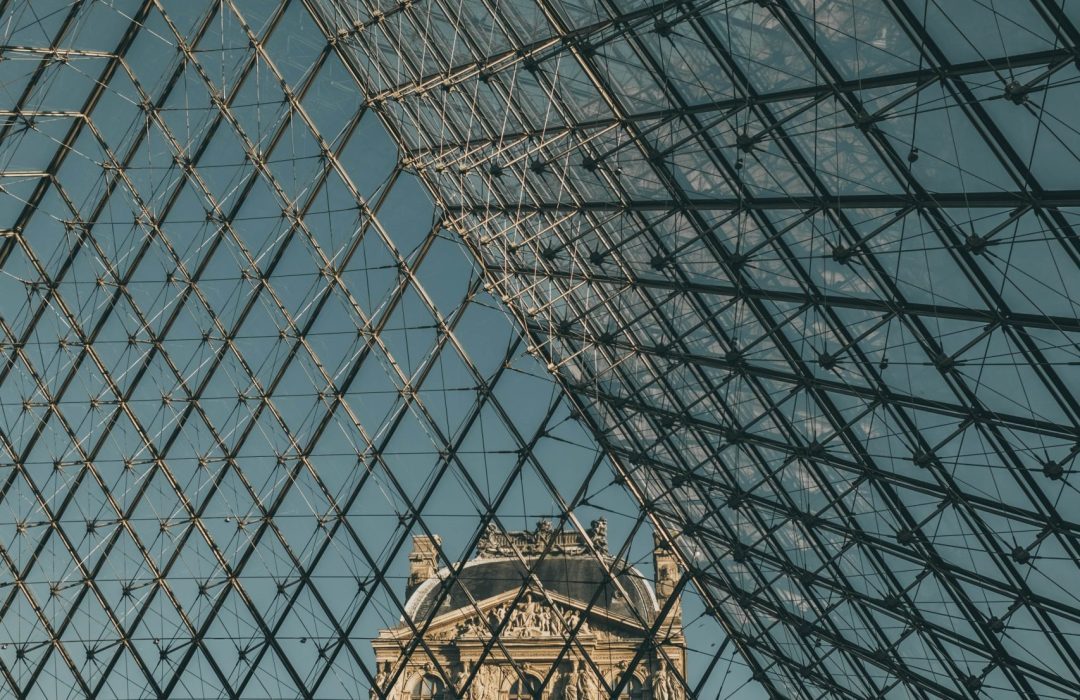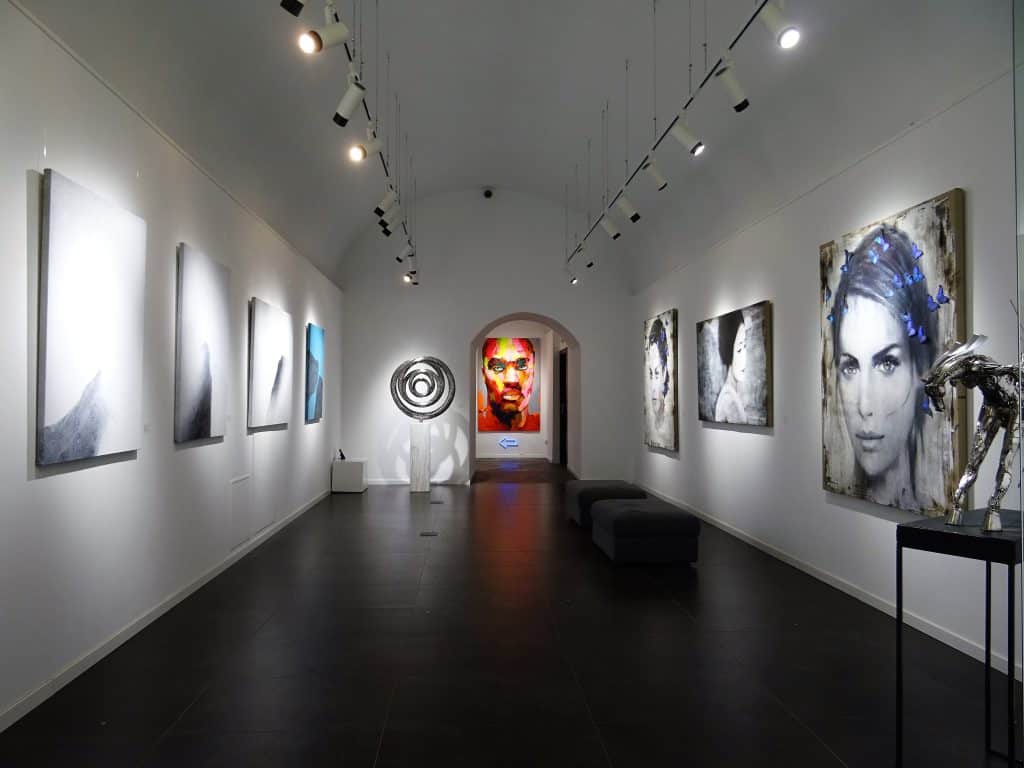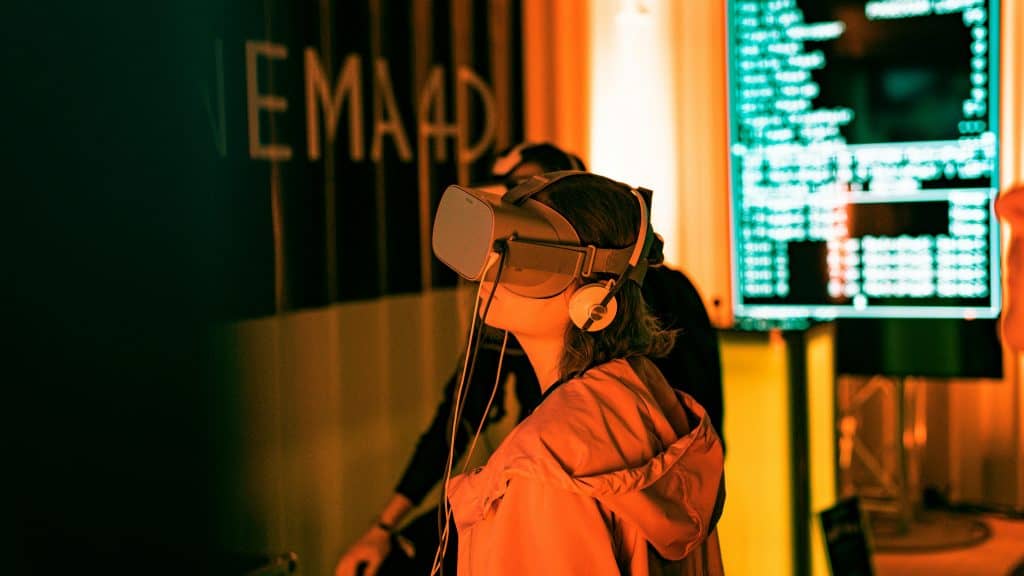
25 Feb Virtual Reality (VR) in Art Exhibition Tours in 2024
Virtual Reality (VR) stands at the forefront of technological innovation, reshaping the landscape of numerous industries with its immersive capabilities and boundless potential. Among its diverse applications, the realm of art has been profoundly impacted by the advent of VR technology. Offering a transformative and unparalleled experience, VR transcends the confines of traditional art exhibition tours, which have long grappled with physical constraints and limited accessibility. By seamlessly blending the digital and physical realms, VR introduces a new paradigm in the appreciation and dissemination of artistic creations, heralding a renaissance in how artists showcase their works and how audiences engage with them. This paradigm shift not only enriches the artistic experience but also fosters inclusivity, inviting individuals from all walks of life to partake in the wonders of artistic expression like never before. As VR continues to evolve and permeate deeper into the fabric of society, its impact on the art world promises to be nothing short of transformative, heralding a new era of creativity, accessibility, and engagement.
Benefits of Virtual Reality Art Exhibition Tours

Photo by Kampus Production
Immersion and Presence
Virtual Reality (VR) technology immerses users into meticulously crafted virtual galleries, effectively transporting them into an alternative artistic dimension. Through VR, individuals have the unique opportunity to physically navigate through these digital spaces, interacting with artworks in a manner that transcends the limitations of traditional galleries. Every brushstroke, texture, and dimension is magnified, providing an intimate and immersive encounter with the artist’s vision. The technology facilitates an unparalleled sense of scale and detail, granting users insights and perspectives that often elude them in real-world settings. By enveloping participants in the atmosphere and context of the exhibition, VR fosters a profound and deeply personal connection with the art, enriching the overall viewing experience.
Accessibility and Reach
One of the most revolutionary aspects of VR art exhibition tours lies in their ability to surmount physical barriers and limitations. Individuals grappling with challenges such as geographical distance, mobility impairments, or sensory disabilities now possess the means to seamlessly access art from the comfort of their surroundings. This democratization of art not only extends its reach to remote or marginalized communities but also serves as a powerful catalyst for inclusivity within the cultural sphere. By transcending the confines of physical space and time, VR exhibitions dismantle barriers to cultural engagement, ensuring that art remains accessible and relevant to all. Moreover, the flexible nature of VR extends beyond the constraints of traditional gallery hours and capacities, granting users the freedom to engage with art at their own convenience, regardless of temporal or spatial constraints.
Engagement and Interactivity
Passive observation gives way to active inquiry and discovery in the world of VR art. It is recommended that participants explore artworks in more detail in order to find interactive aspects and hidden nuances that urge deeper engagement. The user experience is further enhanced with educational information and well chosen tales, which turn every interaction into an illuminating and educational adventure. In addition to offering chances for discussion, cooperation, and joint discovery, virtual gatherings and community platforms help art aficionados feel connected and at home. By utilizing VR, the art world breaks down geographical barriers and ushers in a new era of participation, communication, and group enjoyment of artistic expression and creation.
Examples of VR Art Exhibition Tours

Photo by Mark Amores
Existing VR Experiences
Dali Museum VR
Dali Museum VR offers an immersive journey into the surreal world crafted by Salvador Dalí, where viewers can transcend the boundaries of traditional art appreciation and delve into the depths of his masterpieces. Through the innovative medium of virtual reality, participants are invited to step beyond the confines of reality and explore the enigmatic landscapes and thought-provoking imagery that define Dalí’s artistic vision. From melting clocks to dreamlike landscapes, each artwork is brought to life in a new dimension, allowing viewers to engage with the intricate details and surreal symbolism that characterize Dalí’s oeuvre.
Louvre VR Tour
The Louvre VR Tour provides an unprecedented opportunity to virtually wander through the illustrious halls of one of the world’s most renowned art museums. Transported into a digital realm, participants can meander through the grand corridors and expansive galleries of the Louvre, encountering iconic artworks from throughout history. From the enigmatic smile of the Mona Lisa to the majestic beauty of the Venus de Milo, visitors can explore these treasures from different angles, gaining fresh insights into their historical significance and enduring cultural impact.
Met Unframed
Met Unframed reimagines the Metropolitan Museum of Art’s vast collection within a virtual realm, offering a captivating new perspective on its timeless pieces. Through immersive technology, participants can embark on a journey through the museum’s diverse galleries, encountering a rich tapestry of artistic treasures from across the globe and throughout history. From ancient artifacts to modern masterpieces, each artwork is presented in a dynamic and interactive format, inviting viewers to engage with its cultural context and aesthetic significance in ways that transcend the limitations of traditional museum experiences.
Independent VR Art Projects
The advent of innovative virtual reality (VR) installations and artistic applications is undeniably reshaping the landscape of traditional exhibitions. Gone are the limitations imposed by physical spaces; instead, artists now harness the boundless potential of VR to craft immersive experiences that transcend conventional boundaries. Through the medium of virtual reality, sculptors have transcended the constraints of physical materials, conjuring ethereal forms and fantastical landscapes that defy conventional perception. Moreover, interactive digital installations invite audiences to actively engage with art in unprecedented ways, blurring the lines between creator and spectator. As technology continues to evolve, the fusion of art and VR promises to unlock new dimensions of creativity, inviting viewers to embark on immersive journeys that challenge preconceived notions of space, time, and perception. Indeed, the realm of artistic expression stands poised at the forefront of a digital revolution, where the canvas extends far beyond the physical realm into the limitless expanse of virtual possibility.
Challenges and Future Considerations

Photo by SevenStorm JUHASZIMRUS
Technological Limitations
VR technology holds immense potential, yet it grapples with certain limitations that hinder its widespread adoption and seamless user experience. One of the primary hurdles is the accessibility and cost of hardware required to delve into virtual reality environments. While VR headsets and accompanying equipment become more sophisticated, they remain relatively expensive, limiting access to a broader audience.
Moreover, another significant challenge lies in addressing potential discomfort or nausea that users may experience during prolonged VR sessions. The immersive nature of VR can sometimes trigger physical discomfort or motion sickness, which detracts from the overall experience. Overcoming these issues demands innovation in hardware design and software development to mitigate such adverse effects and ensure a comfortable experience for all users, regardless of their sensitivities.
Ethical Considerations
As VR becomes increasingly intertwined with the art world, it prompts profound ethical considerations that necessitate careful navigation. The digital landscape challenges traditional notions of authenticity, ownership, and preservation concerning digital art within virtual environments. Questions arise regarding the originality of virtual creations, the rights of creators, and the long-term conservation of digital artworks.
Balancing technological advancement with ethical imperatives is paramount to foster a responsible evolution of VR in the art realm. Establishing frameworks for copyright, intellectual property rights, and digital preservation becomes imperative to uphold the integrity and value of virtual art while respecting the rights and contributions of artists and creators.
The Future of VR in Art
Looking towards the horizon, the future of VR in art appears promising, marked by continual innovation and expansion. Anticipate the emergence of novel forms of VR art experiences that push the boundaries of creativity and immersion. Artists and curators are increasingly exploring the integration of VR technology within physical exhibitions, forging hybrid spaces that seamlessly blend the digital and tangible worlds.
These hybrid environments offer new avenues for artistic expression and audience engagement, transforming traditional notions of art consumption and exhibition. As VR technology evolves and becomes more accessible, expect to witness a proliferation of diverse and immersive art experiences that captivate and inspire audiences across the globe. The convergence of VR and art promises to redefine the boundaries of creativity, imagination, and human expression in the digital age.

Photo by Nicolas Arnold
Conclusion
Virtual Reality (VR) stands as a transformative force, reshaping how individuals engage with and experience art. VR transcends the confines of traditional tours, offering immersive encounters that surmount physical barriers and democratize access to cultural treasures. Through VR, users embark on journeys of exploration and discovery, delving into virtual galleries where the boundaries between the real and the imagined blur. Immersion and presence enable users to immerse themselves in the atmosphere of exhibitions, gaining insights into the nuances of artistic expression. Accessibility becomes paramount as VR bridges geographical distances and accommodates diverse needs, ensuring that art remains inclusive and accessible to all. Engagement flourishes as users interact with artworks in ways previously unimagined, fostering connections and fostering a sense of community among art enthusiasts.
While technological limitations and ethical considerations pose challenges, the future of VR in art shines brightly with promise. As technology advances and ethical frameworks evolve, VR art experiences will continue to evolve, offering novel forms of expression and integration with physical exhibitions. Hybrid spaces that blend the digital and tangible worlds will redefine the boundaries of artistic creation, inviting audiences to embark on journeys of exploration and discovery like never before. In this ever-evolving landscape, the fusion of VR and art holds the potential to inspire, provoke, and transform. Through VR art exhibition tours, we embark on a journey where imagination knows no bounds, and art transcends the constraints of space and time.
Key Takeaways
Benefit | Example |
Immersion and Presence | Virtual galleries provide unparalleled art experiences |
Accessibility and Reach | VR democratizes art, reaching remote communities |
Engagement and Interactivity | VR enhances learning and fosters art communities |
FAQs
Can anyone access VR art exhibitions?
Yes, anyone can access VR art exhibitions regardless of their physical location or mobility constraints. VR art exhibitions overcome physical barriers, making art accessible to anyone with a VR headset. This inclusivity allows individuals from diverse backgrounds and geographical locations to immerse themselves in artistic experiences they might not otherwise have access to.
Are there ethical concerns regarding digital art in VR?
Ethical concerns regarding digital art in VR revolve around issues of authenticity, ownership, and preservation. As digital art becomes more prevalent in virtual reality spaces, questions arise about the integrity of the artwork, the rights of the artists, and the long-term preservation of these digital creations. Issues such as copyright infringement, digital piracy, and the potential for unauthorized modifications challenge the ethical framework surrounding VR art.
How is VR shaping the future of art experiences?
VR is shaping the future of art experiences by revolutionizing how audiences interact with and perceive artistic creations. Through immersive virtual environments, VR introduces new dimensions to artistic expression, allowing artists to experiment with spatial dynamics, interactivity, and multisensory engagement. VR is expected to introduce new forms of art experiences, blending the digital and physical in innovative ways. This transformative technology enables artists to push the boundaries of traditional art mediums, inviting viewers to participate in dynamic and immersive narratives that transcend conventional artistic practices.
Read our “Curatorial Practices for Art Exhibitions” guide and find insight into effective curatorial practices for creating meaningful physical art exhibitions.

